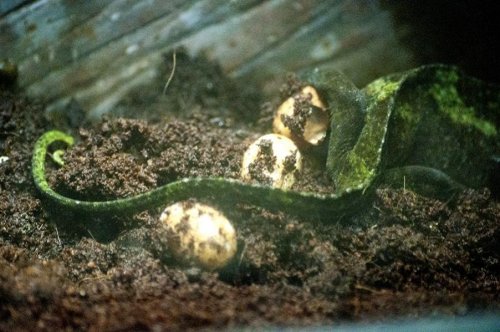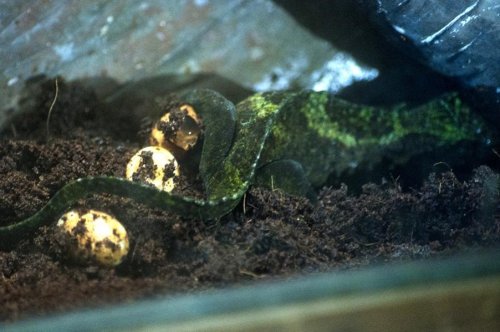Chris Anderson
Dr. House of Chameleons
Sorry to be a skeptic, but from reading your other thread, it sounds to me like the laying container you used was not new (in other words it was not an empty container that you put fresh laying medium in right before she laid, but rather was a laying container that had either been in the enclosure for some time or had been used previously with other T. quadricornis clutches) and that you had multiple females using it, is that correct? It sounds to me like this is a previous clutch that had been laid by one of your females (possibly from retained sperm?) and that you only discovered it when this female was digging in the same area trying to lay her current clutch (in effect when she was digging test holes). I highly doubt it was actually laid at the same time as the subsequent eggs, especially given the short incubation time. Could you provide more details about the laying container, its use history, etc.? Did you take weight measurements before and after the female supposedly laid the clutch of huge eggs to verify that she had actually laid a clutch?
Chris
Chris








